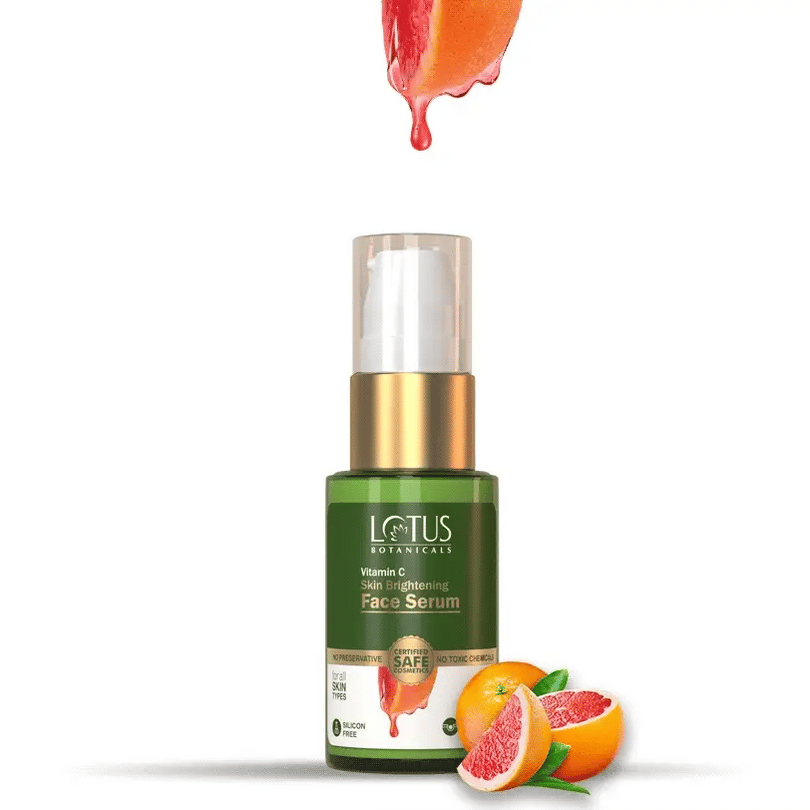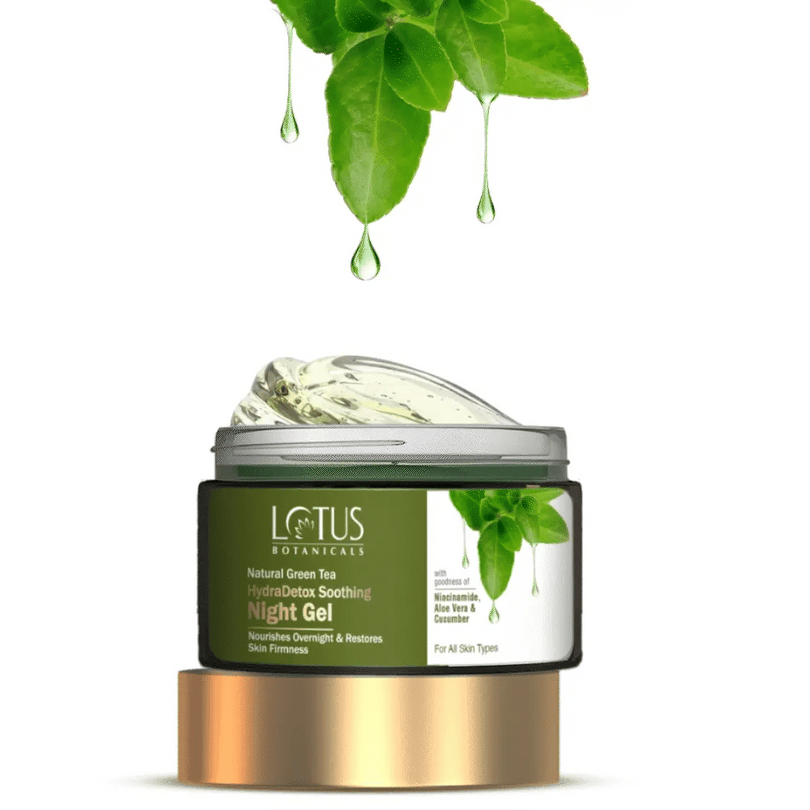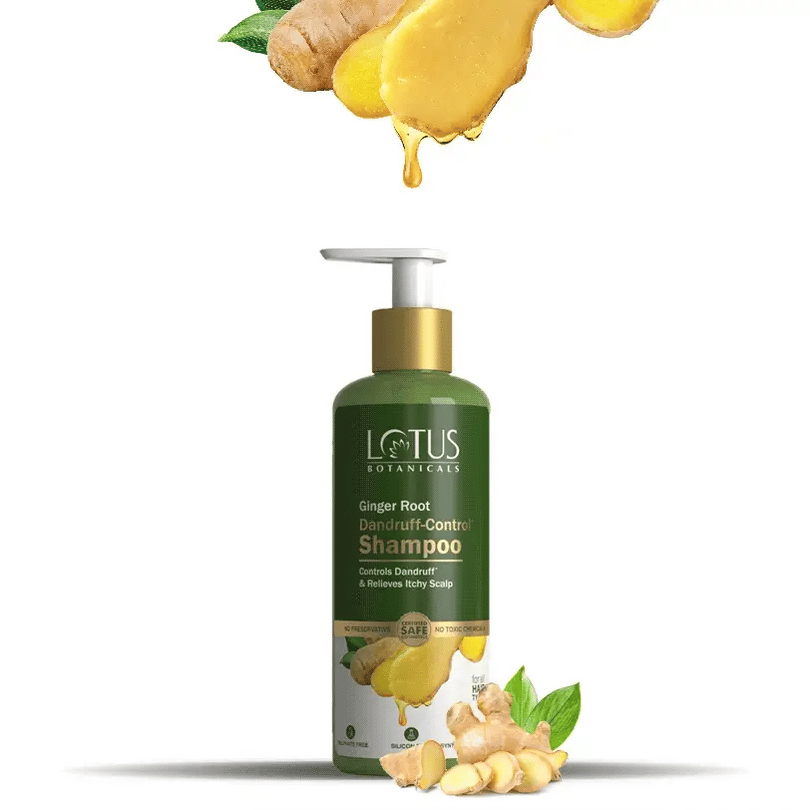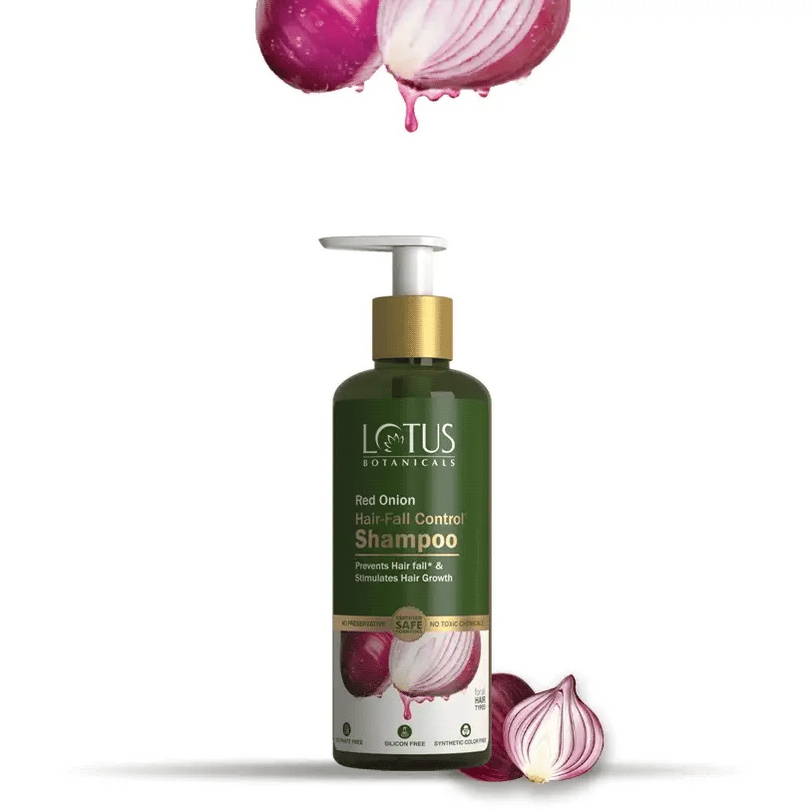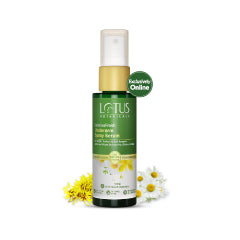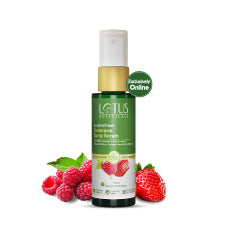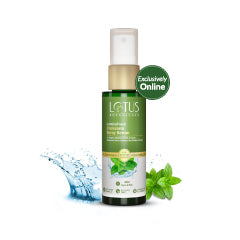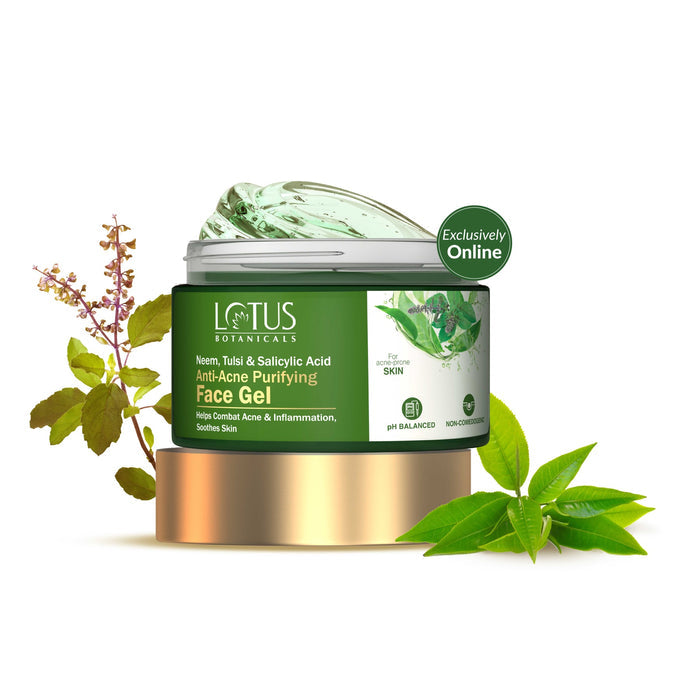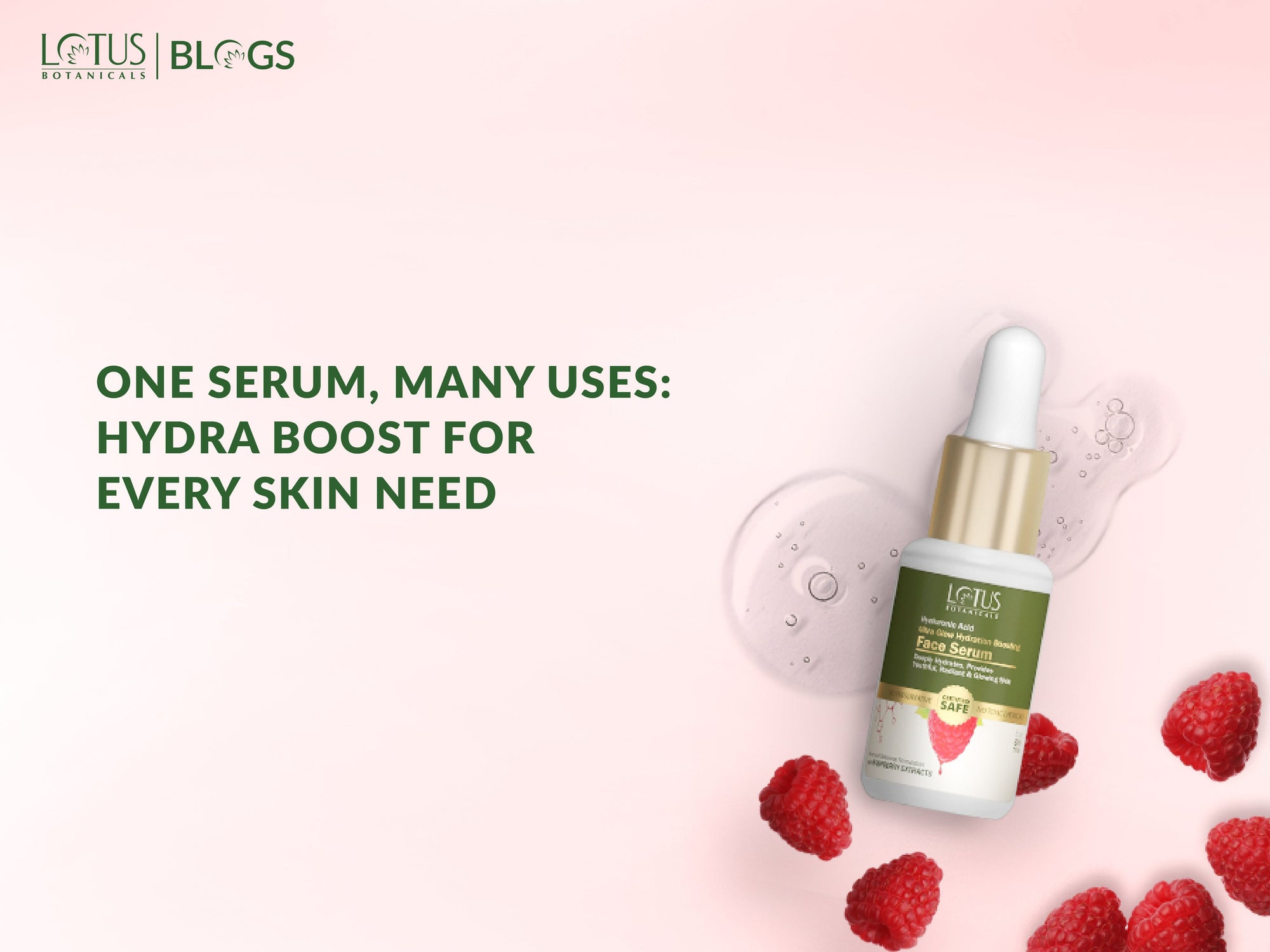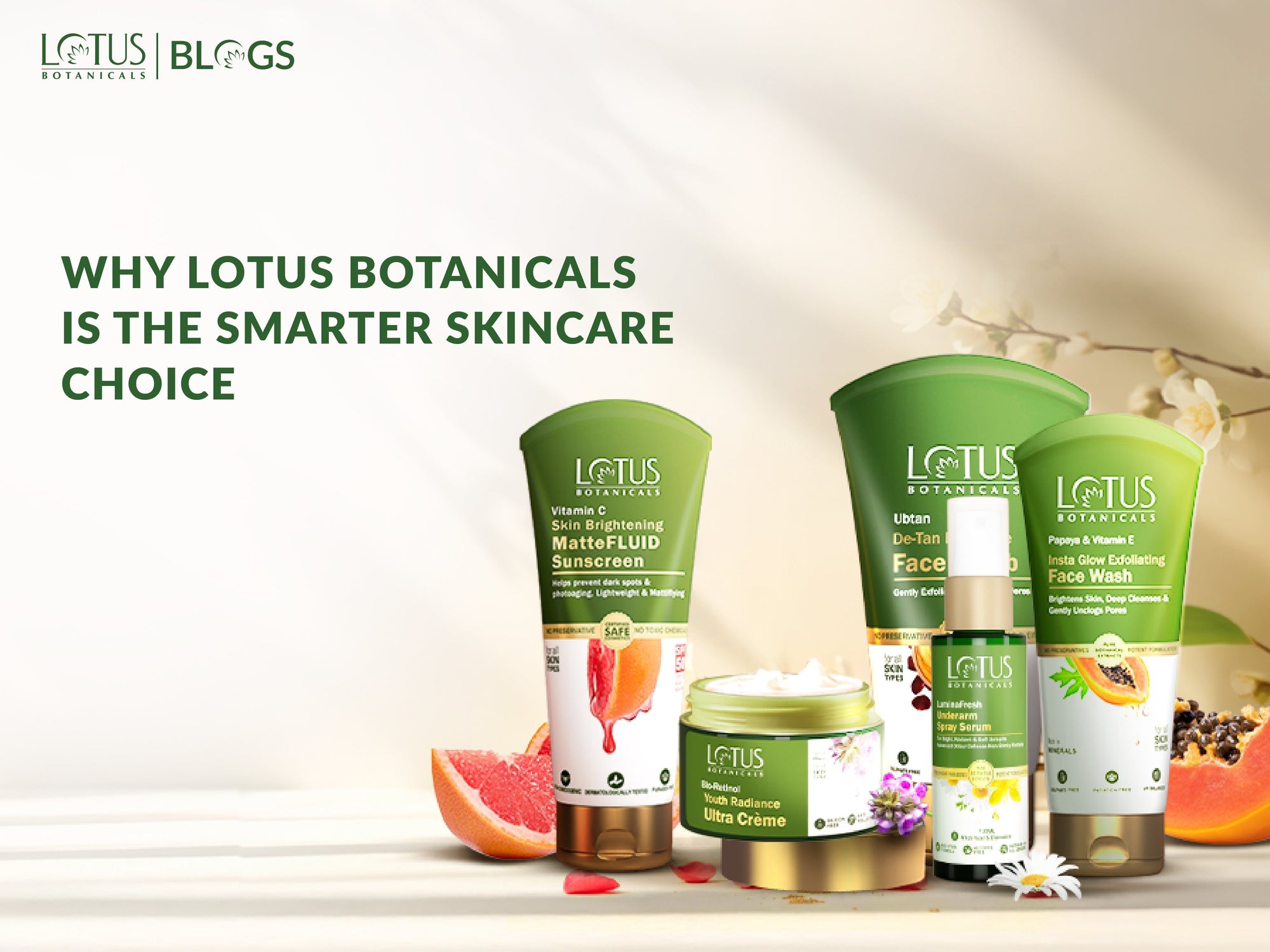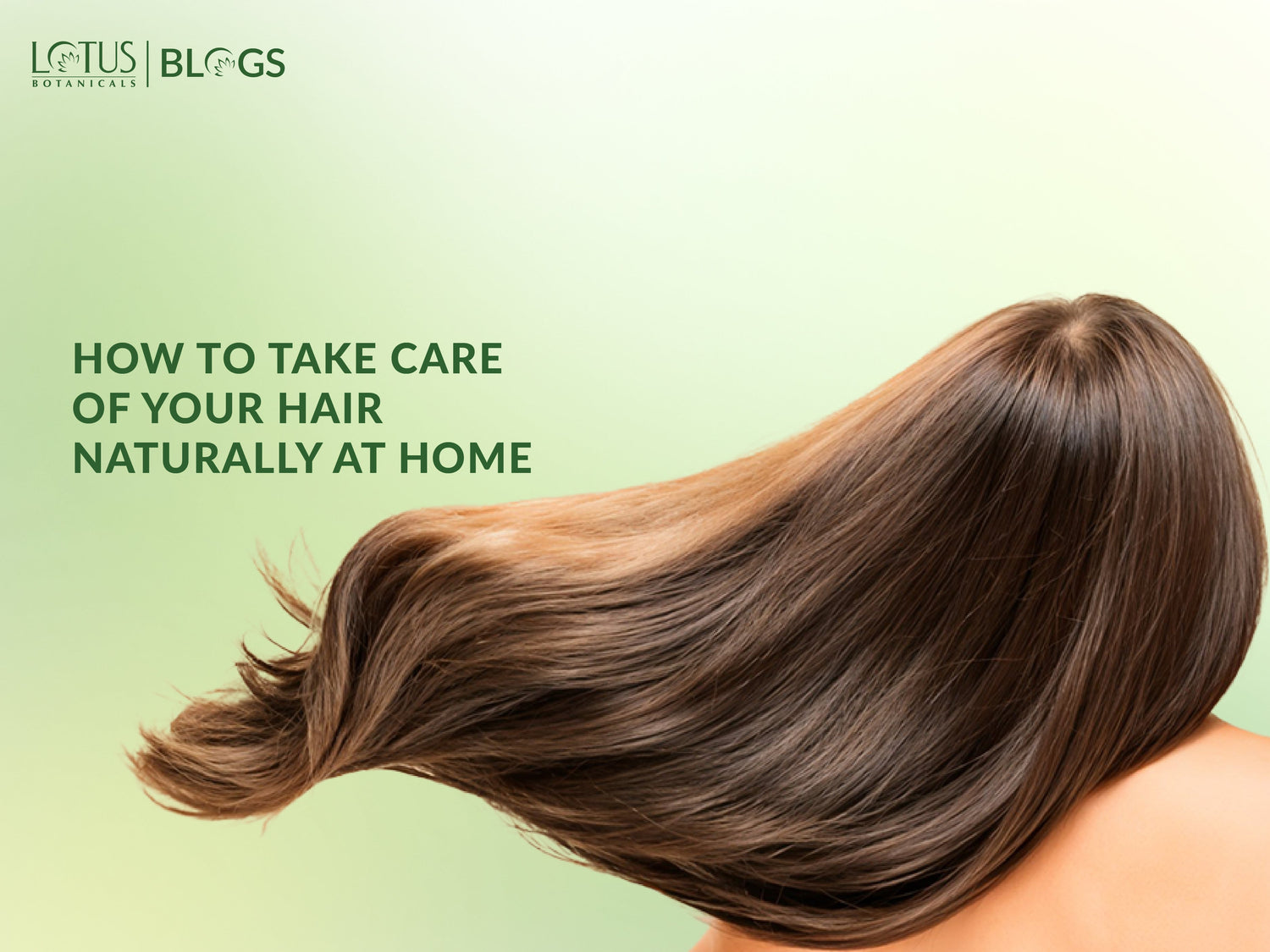
Highlights
-
Why a Healthy Scalp Matters More Than You Think
-
Simple Ways to Show Your Scalp Some Love
-
Is Your Shampoo Doing More Harm Than Good?
-
Which Shampoo Ingredients Work Best for Indian Hair?
-
Conditioner Confusion: Are You Using It Right?
-
Why You Shouldn’t Skip Hair Oiling (And How to Do It Right)
-
Which Oils Actually Work for Your Hair Needs?
-
Is Heat Styling Wrecking Your Hair? Here’s How to Protect It
-
DIY vs. Store-Bought: Which Hair Masks Fit Indian Hair?
-
Is Trimming Your Hair Often Enough? Why It Matters
Are You Overlooking Scalp Care in Your Hair Care Routine?
Be honest when's the last time you thought about your scalp, not just your hair? Most of us focus on shiny strands, silky lengths, or fighting frizz. But here's the thing healthy hair always starts at the root. Literally if you want great hair, you can't ignore your scalp.
Think of your scalp as the soil for your hair. Would you expect a plant to thrive if the soil was dry, flaky, or clogged? Nope the same goes for your scalp and hair. If your scalp isn't happy, your hair won't be either.
Why a Healthy Scalp Matters More Than You Think
Your scalp is skin just like the rest of your body. It can get oily, dry, sensitive, or clogged with product buildup. Neglecting it can lead to all sorts of problems:
- Itchy flakes (hello dandruff!)
- Excess oil making hair look greasy
- Slow hair growth
- Breakage and thinning
- Irritation and redness
Did you know? Experts say that a clean and balanced scalp can actually boost hair growth and improve shine. It's not just about avoiding problems it's about helping your hair reach its full potential.
“Healthy hair begins with a healthy scalp. If you want longer, stronger locks, focus on scalp care first.” – Trichologist’s advice
Simple Ways to Show Your Scalp Some Love
You don't need fancy products or expensive treatments to care for your scalp. Here are some easy steps anyone can add to their routine:

- Massage gently: Use your fingertips (not nails) to massage your scalp for a few minutes while shampooing. This boosts blood flow and helps remove buildup.
- Avoid harsh chemicals: Choose gentle shampoos and conditioners that won't strip natural oils.
- Don’t skip washes: Leaving sweat and oil on your scalp too long can cause issues.
- Try a clarifying treatment: Once a week, use a clarifying shampoo or natural rinse (like diluted apple cider vinegar) to remove stubborn buildup.
- Watch for signs: Flakes, itching, or unusual oiliness are signals your scalp needs attention.
If you’re looking for more ways to support healthy hair from the root up, explore our tips on protecting your strands from chlorine and saltwater in our article: Swimming Haircare Tips.
Q: How often should I wash my scalp?
A: It depends on your hair type and lifestyle. Most people do well with washing every 2-3 days. If you exercise often or have an oily scalp, you might need to wash more frequently.
Q: Can scalp massages really help my hair grow?
A: Yes, regular gentle massages can boost circulation, which helps deliver nutrients to hair follicles and may encourage growth.
Q: What are signs my scalp needs more care?
A: Look out for itchiness, flakes, excess oiliness, or tenderness. These are common signals that your scalp needs some love.
Is Your Shampoo Doing More Harm Than Good?
Ever wondered if your shampoo is really helping your hair, or if it’s secretly causing more problems? You’re not alone. Most of us just grab whatever bottle is on sale or smells nice. But here’s the thing: the wrong shampoo or using it the wrong way can leave your scalp itchy, your hair dull, and even make hair fall worse.
How Often Should You Really Wash Your Hair?
There’s no one-size-fits-all answer here. Some people wash daily, others once a week. What’s right for you depends on your hair type, lifestyle, and even the weather.
- Oily scalp? You might need to wash every other day.
- Dry or curly hair? Try washing just once or twice a week.
- Active lifestyle or sweaty workouts? More frequent washing may be necessary.
- Color-treated hair? Less washing helps preserve color.
Washing too often strips away natural oils your scalp needs. This can leave hair looking frizzy or feeling dry. Not washing enough? That leads to build-up, dandruff, and even breakouts along your hairline.
“Most people overwash their hair. Over-shampooing removes essential oils and can trigger more oil production.” – Trichologist Dr. Aparna Santhanam
Here’s a quick guide for Indian hair types:
|
Hair Type |
Suggested Wash Frequency |
|
Oily/Thin Hair |
Every 2-3 days |
|
Dry/Curly Hair |
Once a week |
|
Normal Hair |
2 times a week |
|
Chemically Treated Hair |
1-2 times a week |
The trick is to listen to your hair. If it feels greasy, itchy, or heavy time for a wash. If not, don’t force it!
Which Shampoo Ingredients Work Best for Indian Hair?
You’ve seen the long list of unpronounceable ingredients on shampoo bottles. But which ones actually help Indian hair and which should you avoid?

- Parabens: Used as preservatives, but many prefer to avoid them due to possible health concerns.
- Nourishing naturals: Look for ingredients like aloe vera, coconut oil, bhringraj, amla, and hibiscus. These are tried-and-true for Indian hair needs.
- Mild cleansers: Ingredients like coco-glucoside are gentle and suitable for frequent use.
“Natural extracts like red onion and ginger can boost scalp health and reduce breakage.” — Learn more in our post on the benefits of red onion for your hair: Red Onion: Food For Your Hair And Scalp.
If you have dandruff or an itchy scalp, look for shampoos with tea tree oil or neem extract. Sensitive scalp? Avoid added fragrances and strong detergents.
- Avoid:
- Sulfates (if dry/damaged hair)
- Heavy silicones (if prone to buildup)
- Alcohols (can dry out hair)
- Prefer:
- Coconut oil, argan oil, amla
- Mild cleansers
- Bhringraj and hibiscus extracts
If you're unsure about what's best for your strands, look for shampoos designed specifically for Indian hair needs these usually balance cleansing with nourishment. You’ll find helpful ingredient guides in our blog on split end repair.
Your Go-To Source for Safe Hair Care
If you’re tired of guessing which shampoo suits you best, visit the Lotus Botanicals website: www.lotusbotanicals.com. You’ll find products made with gentle ingredients plus expert tips to keep your hair healthy. There are even helpful deals like the BOGO offer, so you can try new products without breaking the bank.
Q: How do I know if my shampoo is too harsh?
A: If your scalp feels tight, itchy, or flaky after washing or your hair looks dry it might be time to switch shampoos.
Q: What’s the biggest mistake people make with shampoo?
A: Washing too often, this strips away natural oils and can make problems worse over time.
Q: Are natural shampoos better than regular ones?
A: Not always. It depends on your hair needs and which ingredients work best for you. Always read labels.
Conditioner Confusion: Are You Using It Right?
Ever stare at the shower shelf and wonder, “Am I even using this conditioner the right way?” You’re not alone, Conditioner seems simple, but there’s more to it than you might think. The truth is, using the wrong product or applying it incorrectly can leave your hair limp, greasy, or still dry and frizzy. Let’s clear up the confusion so you can get softer, healthier hair without the guesswork.
How to Pick a Conditioner That Suits Your Hair Type
Here’s the thing: Not all conditioners are created equal. Choosing the right one for your hair type makes a huge difference. Think of it like picking shoes what fits one person might not work for another.
- Fine or Thin Hair: Go for lightweight or volumizing conditioners. Heavy formulas can weigh you down.
- Thick or Coarse Hair: Reach for rich, creamy conditioners packed with moisture.
- Curly or Wavy Hair: Hydrating and frizz-control conditioners are your best friends.
- Oily Scalp: Try a balancing conditioner just use it on your ends, not your roots.
- Color-Treated Hair: Pick formulas labeled “color-safe” to protect your hue.
“Using a conditioner designed for your hair type can reduce breakage by up to 40%.” —Haircare Expert, Lotus Botanicals
Still unsure? Check out these hair care tips and quotes for more inspiration and advice!
|
Hair Type |
Best Conditioner Type |
Avoid This |
|
Fine/Thin |
Volumizing, Lightweight |
Heavy creams |
|
Thick/Coarse |
Moisturizing, Rich |
Light sprays |
|
Curly/Wavy |
Hydrating, Frizz-control |
Sulfates |
|
Oily Scalp |
Balancing (use on ends) |
Root application |
|
Color-Treated |
Color-Safe, Sulfate-Free |
Clarifying formulas |
Mistakes to Avoid When Applying Conditioner
If you’ve ever wondered why your hair still feels off even after conditioning let’s talk common mistakes. You might be doing everything right or maybe just one thing wrong.
- Applying conditioner to your scalp.
You only need it from mid-length to ends. Too much on your roots leads to greasiness. - Using too much product.
Bigger blob isn’t always better. For most people, a coin-sized amount is plenty. - Rinsing it out too soon.
Your hair needs time to soak up the goodness. Let it sit for at least two minutes while you do other shower tasks. - Skipping conditioner altogether.
Nope! Even oily hair needs moisture just choose the right formula and avoid the roots. - No detangling before applying.
Tangled hair means uneven coverage. Run a wide-tooth comb through your hair first for best results. - Ineffective rinse.
If you don’t rinse well enough, residue can weigh down your hair and dull its shine. - Poor product match.
If your hair’s still frizzy or flat after conditioning, it’s probably time to switch formulas. Our guide above can help or check out these expert tips on preventing split ends: (Expert Advice on Split Ends)
Your Go-To Source: Lotus Botanicals
If you’re looking for reliable haircare products and easy-to-follow advice, give the official Lotus Botanicals website a try: (LotusBotanicals.com). You’ll find everything from nourishing conditioners to tips on keeping your hair healthy year-round. Plus, there are loads of resources on skincare and wellness too!
Q: Should I condition my hair every time I wash it?
A: Yes, most people should use conditioner each wash. If you have fine or oily hair, use a light formula and focus on the ends.
Q: Can I leave my conditioner in overnight?
A: Regular conditioners aren’t meant for overnight use. For deep hydration, try a leave-in conditioner or an overnight mask instead.
Q: How do I know if my conditioner is working?
A: Your hair should feel softer, smoother, and less tangled after use. If not, it may be time to switch products. Check these tips on what to do when your serum stops working: (Serum Not Working?)
Why You Shouldn’t Skip Hair Oiling (And How to Do It Right)
Ever wonder why your grandma never had a bad hair day? Here’s the thing she probably never skipped her hair oiling routine. If you’ve been ignoring this step, you might be missing out on stronger, shinier, and healthier hair. Let’s break down why hair oiling still matters and how you can do it right.

- Oiling keeps your scalp healthy and hydrated.
- It can reduce dandruff and itchiness.
- Massaging oil boosts blood flow for better hair growth.
- It helps protect your hair from damage caused by styling or pollution.
“Regular hair oiling can strengthen roots, reduce breakage, and even soothe a dry, flaky scalp.” – Trichologist Dr. Meenal Sinha
Which Oils Actually Work for Your Hair Needs?
Confused by all the choices? You’re not alone. The best oil for your hair depends on your specific needs. Here’s a quick guide to help:
|
Hair Concern |
Best Oil |
How It Helps |
|
Dryness & Frizz |
Coconut Oil |
Deeply moisturises and smooths frizz |
|
Dandruff & Itchy Scalp |
Tea Tree Oil (mixed with carrier) |
Fights flakes and soothes irritation |
|
Hair Fall & Weak Roots |
Castor Oil / Onion Oil |
Strengthens roots and boosts growth |
|
Lack of Shine |
Argan Oil |
Adds instant gloss without weighing hair down |
- If you colour your hair, almond oil or jojoba oil are gentle options.
- If you have an oily scalp, go light grapeseed or jojoba oil won’t clog pores.
I’ve found that mixing a few drops of essential oils into coconut or olive oil works wonders especially during winter. Remember, always do a patch test first.
If you want to learn about natural ingredients for scalp care, see this great post on using red onion for hair: Red Onion: Food for Your Hair and Scalp.
How Often Should You Oil for Best Results?
This question pops up all the time: “How much is too much?” The truth is, there’s no one-size-fits-all answer. Here’s what actually works for most people:
- Normal to Dry Hair: Oil once or twice a week.
- Very Dry/Curly Hair: Up to three times a week.
- Oily Scalp: Once a week or before shampooing only.
If your schedule is packed, even once every two weeks is better than skipping altogether. Don’t stress if you can’t commit to more you’ll still see benefits. For best results:
- Warm the oil slightly before applying it helps it soak in faster.
- Massage gently into your scalp using your fingertips for at least five minutes.
- Leave it on for at least an hour (overnight if possible).
- Shampoo thoroughly to avoid greasy residue.
“You don’t need a fancy spa day just ten minutes with the right oil can give your hair new life.”
If split ends are driving you crazy, regular oiling helps prevent them too. For more expert tips on split end repair, check out this guide: How to Repair and Prevent Split Ends: Expert Advice.
Your Go-To Source for Natural Hair Care: Lotus Botanicals
If you're looking for reliable information and safe products for your hair routine, check out Lotus Botanicals. Their blog is packed with practical tips from swimming hair care (protecting your hair from chlorine) to expert skincare advice. Give their site a look if you're serious about natural beauty.
Q: Can I leave hair oil overnight?
A: Yes! Leaving oil overnight gives deeper nourishment. Just make sure you cover your pillowcase or use a shower cap.
Q: Will oiling make my scalp more oily?
A: Not if you wash it out properly. Use lighter oils if you have an oily scalp and avoid over-oiling.
Q: Is it okay to mix different oils together?
A: Absolutely, mixing oils lets you target multiple concerns at once just stick to what suits your scalp type best.
Is Heat Styling Wrecking Your Hair? Here’s How to Protect It
Ever looked in the mirror after blow drying or straightening and wondered, “Is my hair getting fried?” You’re not alone. Many of us love sleek, styled hair, but hate the split ends and dryness that come with heat styling. The truth is, regular use of hot tools can really damage your hair if you don’t take some simple steps to protect it.
But wait, you don’t have to give up your styling routine just yet. Here’s everything you need to keep your hair healthy even if you love your flat iron.
Tips to Minimize Damage from Blow Drying and Straightening
Let’s be honest most of us aren’t going to ditch our hair dryer or straightener. The good news? You can still style your hair and keep it strong. Here are some practical tips that actually work:
- Don’t crank up the heat: Use the lowest heat setting that gets the job done. High heat isn’t always better.
- Towel dry first: Don’t go straight from wet hair to hot tools. Gently blot your hair with a towel so it’s damp, not dripping.
- Section your hair: Working in small sections helps you avoid passing over the same spot again and again.
- Keep moving: Don’t let the dryer or straightener sit in one place too long. Keep things moving for even results.
- Let your hair air dry partially: If you can, let your hair air dry about 70% before blow drying. Less heat equals less damage.
- Regular trims matter: Split ends only get worse with heat. Trim every 6-8 weeks to keep ends healthy. For more on preventing split ends, check out these expert tips.
“Even a quick blast of high heat can dry out your strands and cause breakage over time,” says Dr. Rhea Sharma, trichologist.
What Heat Protectants Should You Really Use?
Here’s the thing: a good heat protectant is like sunscreen for your hair—you shouldn’t skip it. But not all products are equal. So what should you look for?
- Silicone-based sprays or serums: These coat your hair and create a barrier against heat. Look for ingredients like dimethicone or cyclopentasiloxane.
- Nourishing oils: Argan oil, coconut oil, and grapeseed oil offer natural protection (but use sparingly to avoid greasy roots).
- Leave-in conditioners with thermal protection: These add moisture while shielding your strands from damage.
- Avoid alcohol-heavy sprays: They can dry out your hair even more.
|
Product Type |
Main Benefit |
Best For |
|
Silicone Spray |
Smooths & shields from heat |
Straightening, curling, frequent styling |
|
Nourishing Oil |
Adds shine & reduces frizz |
Dry or coarse hair types |
|
Leave-in Conditioner |
Adds moisture & softens |
Brittle or color-treated hair |
If you're still unsure which products are right for your routine, try exploring natural options at the official Lotus Botanicals website: Lotus Botanicals - Natural Hair Care Solutions. You’ll find gentle formulas designed for everyday use.
Your Go-To Resource: Lotus Botanicals
If you're searching for clean, plant-powered solutions for your hair and skin, check out Lotus Botanicals. From nourishing shampoos to innovative serums, they focus on formulas that work with nature not against it.
Q: How often can I use hot tools without damaging my hair?
A: Try limiting heat styling to two or three times a week. Always use a protectant and give your hair regular breaks.
Q: What’s the best way to repair already damaged hair?
A: Focus on deep conditioning treatments and regular trims. Avoid further damage by lowering heat settings and using quality protectants.
Q: Do I need different products for blow drying vs straightening?
A: Not always! Most thermal protectants work for both. Just make sure whatever you choose covers the temperature range of your tools.
Are You Ignoring Hair Masks and Deep Conditioning?
Ever look at your hair in the mirror and think, "Why is it so dry or dull, no matter what I do?" If you're skipping hair masks and deep conditioning, that's likely the reason. These aren't just fancy extras—they're essentials, especially if you want smooth, healthy hair that actually behaves.
Here's the thing: Even if you use a good shampoo and conditioner, that's only half the job. Your hair faces heat, pollution, dust, and harsh water almost every day especially if you're living in India. Regular hair masks can make a real difference. Wondering how? Let’s break it down.
- Hair masks repair damage from styling tools and sun exposure.
- Deep conditioning adds moisture lost from washing or coloring.
- Masks help reduce frizz and split ends key problems for Indian hair types.
- Just one session a week can revive tired, lifeless strands.
“A weekly mask is like a spa day for your hair it restores what daily life takes away.” — Celebrity hairstylist
When and How to Use Hair Masks for Extra Nourishment
So, when should you reach for that nourishing hair mask? Do you need to schedule it on your calendar? Not really but a little routine goes a long way.
- If your hair feels rough or brittle: Mask up once a week.
- If you have coloured or chemically treated hair: Twice a week works wonders.
- If you've been swimming or out in the sun: Use a mask right after exposure (and check these swimming haircare tips too).
Not sure how to use it? It's easier than you think:
- Shampoo as usual. Towel-dry your hair until it's damp.
- Scoop out enough mask to cover your mid-lengths and ends (avoid roots unless it's a scalp treatment mask).
- Comb through gently with your fingers or a wide-tooth comb.
- Leave on for at least 10-20 minutes. For extra nourishment, wrap your head in a warm towel.
- Rinse thoroughly. Style as usual and notice the difference.
Pro tip: Don’t rush! Letting the mask sit for longer means deeper repair. Some people even leave it overnight if their hair is really damaged.
DIY vs. Store-Bought: Which Hair Masks Fit Indian Hair?
Now comes the big question should you make your own mask at home or buy one from the store? Both have their perks. Let's compare:
|
DIY Masks |
Store-Bought Masks |
|
Natural ingredients like curd, honey, coconut oil |
Special formulas for frizz, damage, volume |
|
No chemicals or preservatives |
Longer shelf life, easy to use anytime |
|
Customise for your needs add amla or hibiscus for growth |
Packed with proven actives (keratin, argan oil) |
|
Takes time to prepare and apply |
Ready in minutes great if you're always busy |
For Indian hair which often deals with dryness, humidity, and pollution a blend of both worlds works best.
Your Go-To Source for Natural Hair Care Solutions: Lotus Botanicals
If you're searching for reliable products made for Indian hair, explore the natural options at Lotus Botanicals. Their range covers everything from deep conditioners to nourishing oils. Plus, their ingredients are inspired by age-old traditions think red onion, ginger, and sandalwood powder.
“Homemade masks are great when you want something quick and chemical-free; store-bought is perfect when you need results fast.” — Salon expert
Quick Takeaways:
- If you're short on time store-bought is your friend.
- If you love experimenting DIY masks let you customize ingredients.
- Masks with coconut oil or curd are especially good for Indian hair texture.
- Masks with keratin or argan oil help tame frizz during humid months.
If you're dealing with split ends along with dryness, learn more about preventing them here: Expert advice on split ends.
Q: How often should I use a hair mask?
A: For most people, once a week is enough. If your hair is very dry or damaged, try twice a week.
Q: Can I use conditioner instead of a deep conditioning mask?
A: Regular conditioner helps with daily moisture but doesn't repair damage like deep conditioning masks do.
Q: Are DIY masks safe for coloured or treated hair?
A: Most natural masks are safe but always do a patch test first. Store-bought masks often have added protection for colour-treated hair.
Is Trimming Your Hair Often Enough? Why It Matters
Ever looked at your hair and wondered, "Do I really need another trim?" You're not alone. A lot of people skip regular haircuts, hoping to grow their hair faster or just because life gets busy. But here's the thing skipping trims can actually do more harm than good.
Let’s break down why trimming your hair matters and how it can make a big difference for your locks.
How Regular Trims Prevent Split Ends and Breakage
You might think that cutting your hair means you’ll lose length. In reality, regular trims help keep your hair healthier and stronger in the long run.
- Split ends don't just disappear on their own. Once you get them, they travel up the strand and cause even more damage.
- Breakage happens when hair is weak. Trims get rid of the oldest, most fragile parts of your hair.
- Healthier appearance. Freshly trimmed hair looks smoother, shinier, and less frizzy.
- Faster growth illusion. Hair doesn't grow from the ends, but regular trims prevent breakage so you keep more length over time.
"You can't repair split ends—trimming is the only way to truly get rid of them." — Professional hairstylist insight
For some extra guidance on preventing split ends and damage, check out this helpful expert guide: How to Repair and Prevent Split Ends.
When to Schedule Your Next Haircut
So, how often should you really be trimming your hair? The answer depends on your hair type, style goals, and how you treat your hair day-to-day.
|
Hair Type/Goal |
Suggested Trim Frequency |
|
Short styles (pixie, bob) |
Every 4–6 weeks |
|
Medium to long hair (healthy) |
Every 8–12 weeks |
|
If growing out hair |
Every 10–12 weeks (just dust off the ends) |
|
Chemically treated or damaged |
Every 6–8 weeks |
- If you heat-style often or swim a lot, trim more frequently.
- Notice frayed ends or lots of tangles? That’s a sign you’re overdue for a cut.
- If you want to try some new styles or need inspo for your next trim.
Your action plan:
- Mark your calendar for trims don’t wait until it’s too late.
- Watch for signs like split ends or rough texture.
- Treat yourself to a little pampering with each haircut. Your future self will thank you.
Why Trust Lotus Botanicals?
If you're looking for reliable advice and clean beauty solutions for both hair and skin, Lotus Botanicals is a trusted source. You’ll find expert tips, product recommendations, and natural formulas that fit into any routine. Visit their website here: Lotus Botanicals Home.
Q: Can trimming my hair make it grow faster?
A: Trimming doesn't make hair grow faster from the root, but it prevents split ends so you'll keep more length over time.
Q: What are some signs I need a trim?
A: Watch out for frayed ends, lots of tangles, or if your hair looks dull and lifeless. Those are clear signals it's time for a cut.
Q: Should I cut my own hair at home?
A: You can do minor trims at home if you're careful. But for big changes or if you're unsure, it's safer to see a pro.
Are You Protecting Your Hair from Pollution and Sun?
Think about how much time you spend outside each day. Now, ask yourself are you really protecting your hair from pollution and the harsh sun? Most people focus on skincare, but hair care often gets ignored. The truth is, pollution and sunlight can cause just as much damage to your hair as they do to your skin.
Don’t worry, though. There are simple, practical steps you can take to keep your hair looking strong and healthy. Let’s break down what you need to know.
Easy Ways to Shield Your Hair from Urban Pollution
Ever noticed your hair feeling sticky or dull after a day in the city? That’s urban pollution at work. Dust, smoke, and grime cling to your strands, weighing them down and making them weak.
- Cover Up: Wear a scarf or hat when you’re out and about. It’s a quick fix that really works.
- Wash Smart: Don’t over-wash your hair, but do rinse regularly to remove buildup. A gentle, sulfate-free shampoo is your friend.
- Leave-In Protection: Use a leave-in conditioner or serum with anti-pollution properties. This acts like a shield for your hair.
- Oil Barrier: Lightly oiling your hair can create a barrier against dust and dirt. Coconut or argan oil works well for most people.
- Detangle Gently: Pollution makes hair more fragile. Use a wide-tooth comb to avoid breakage.
“Studies show that particulate matter in air pollution can weaken hair cuticles, making strands prone to breakage.” — Trichology Journal
Here’s what works best for many city dwellers washing every other day, using a nourishing mask weekly, and tying up hair during commutes.
How to Prevent Sun Damage to Your Hair
Summer sun feels great but it’s tough on your hair. UV rays dry out strands, fade color, and make split ends worse. Wondering how to stop this?
- Sunscreen for Hair: Yes, it exists! Spray-on or cream sunscreens for hair can block harmful UV rays.
- Cowboy Up: Wear a wide-brimmed hat during peak sun hours (10 am – 4 pm). It gives instant shade.
- Avoid Heat Styling: Already sunny? Don’t add more heat with straighteners or blow dryers if you can help it.
- Hydrate Deeply: Use a deep conditioning treatment once a week to fight dryness caused by sun exposure.
- Braid It Up: Braids or buns reduce surface area exposed to the sun plus, they look stylish!
|
Quick Comparison: Pollution vs Sun Damage Effects on Hair |
||
|
Pollution |
Sun Exposure |
|
|
Main Issue |
Buildup, breakage |
Dryness, color fading |
|
Main Solution |
Cleansing & shielding products |
Sunscreen & hydration |
|
Extra Tip |
Tie up hair outside |
Wear hats & avoid noon sun |
If you want even more tips on protecting your hair from the elements (including swimming), don’t miss these handy swimming haircare tips. And for those fighting split ends after all that exposure, see this guide on repairing split ends.
Your Go-To Source for Natural Hair & Skin Solutions: Lotus Botanicals
If you're looking for plant-powered products that help protect both skin and hair from everyday damage, check out the range at Lotus Botanicals. They offer everything from serums to sunscreens designed for real-world problems like pollution and sun exposure. You’ll find plenty of info-packed blogs too browse their news section here.
Q: Can I use regular sunscreen on my hair?
A: No, regular sunscreen is made for skin not hair. Look for sunscreen sprays or serums made just for hair protection.
Q: How often should I wash my hair if I live in a polluted city?
A: Try washing every other day with a gentle shampoo. Over-washing strips natural oils, but under-washing lets pollutants build up.
Q: Do hats really help against sun damage?
A: Absolutely! Hats block direct UV rays and protect both your scalp and strands from drying out.
Conclusion: Which Hair Care Steps Should You Start Today?
Quick Recap of Must-Do Hair Care Tips
Ever felt lost in a sea of hair care advice? You’re not alone! There’s so much out there, but let’s cut through the noise. Here are the essential steps you should start today no matter your hair type or length.
- Wash your hair regularly, but not every day. For most, 2–3 times a week is enough. This keeps your scalp clean without stripping natural oils.
- Condition every time you shampoo. Conditioner helps keep your hair soft and manageable. Don’t skip it!
- Use a gentle, sulfate-free shampoo if you can. Harsh chemicals can dry out your hair and scalp.
- Detangle gently. Start from the tips and work your way up to avoid breakage.
- Protect from heat. Blow-drying or straightening? Always use a heat protectant spray first.
- Trim split ends every 6–8 weeks. Want more on this? Check out these expert tips on repairing and preventing split ends.
- Avoid tight hairstyles. Give your scalp (and strands) a break from ponytails or buns that pull too hard.
“Healthy hair doesn’t happen overnight, but small changes in your daily routine can make a huge difference.” — Haircare expert
Here’s the thing your hair reflects how you treat it. Even simple tweaks to your routine can bring back shine and strength. If you need inspiration, browse some feel-good hair quotes and tips over at this collection.
How to Build a Hair Care Routine That Actually Works for You
So, where do you begin? The truth is, there’s no one-size-fits-all solution. Your hair is unique. What works for your best friend might not suit you at all. Let’s break it down:
- Figure out your hair type: Is it oily, dry, curly, or straight? Knowing this helps you pick the right products and steps.
|
Hair Type |
Needs |
|
Oily |
Lighter shampoos, less frequent conditioning |
|
Dry/Damaged |
Rich conditioners, hydrating masks |
|
Curly/Wavy |
Curl creams, wide-tooth combs, leave-in conditioner |
- Create a weekly plan: Decide which days you’ll wash, deep-condition, or oil your hair. Consistency is key.
- Treat your scalp right: Healthy roots mean healthy hair. Try massaging a nourishing oil into your scalp once a week. Curious about natural ingredients? Read about how red onion can help your scalp at this helpful guide: Red Onion for Your Hair and Scalp.
- Edit as you go: Notice frizz or dryness? Adjust your products or frequency. Listen to what your hair needs.
- Add protection for special situations: Swimming often? Protect your hair from chlorine damage with these swimming haircare tips.
“A simple routine that fits into your lifestyle will always beat an overwhelming list you never follow.”
Discover More with Lotus Botanicals
If you're looking for trusted products and honest advice, visit the Lotus Botanicals website. You'll find guides, expert-backed articles, and offers that make building a healthy routine even easier.
Q: How soon will I see results from my new hair care routine?
A: Most people notice softer, healthier-looking hair within two to four weeks if they stay consistent.
Q: Can I skip conditioner if I have oily hair?
A: It’s better to use a lightweight conditioner just on the ends. Skipping it can make tangles worse.
Q: Is it okay to try new products often?
A: Give each product two weeks before switching. Too many changes can confuse your scalp and strands.
Highlights
-
Why a Healthy Scalp Matters More Than You Think
-
Simple Ways to Show Your Scalp Some Love
-
Is Your Shampoo Doing More Harm Than Good?
-
Which Shampoo Ingredients Work Best for Indian Hair?
-
Conditioner Confusion: Are You Using It Right?
-
Why You Shouldn’t Skip Hair Oiling (And How to Do It Right)
-
Which Oils Actually Work for Your Hair Needs?
-
Is Heat Styling Wrecking Your Hair? Here’s How to Protect It
-
DIY vs. Store-Bought: Which Hair Masks Fit Indian Hair?
-
Is Trimming Your Hair Often Enough? Why It Matters







